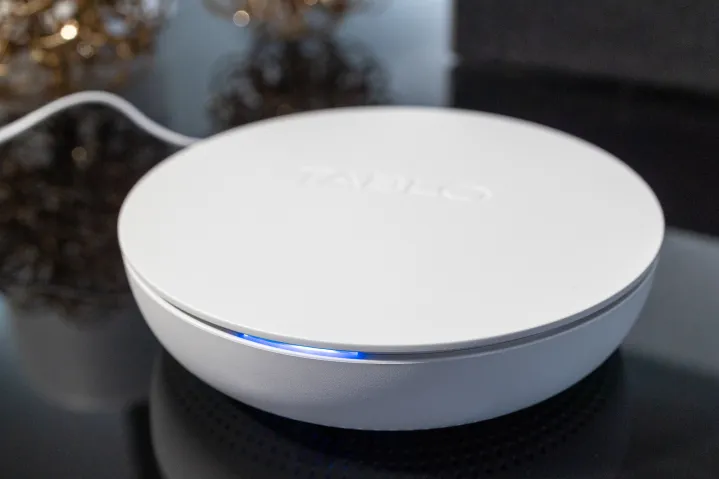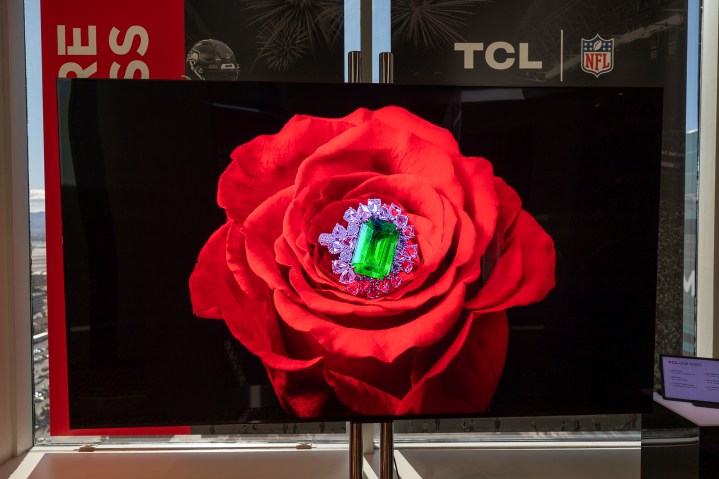On today’s episode of You Asked: Can certain videos on YouTube actually help fix burn-in on your OLED TV, or will they make things worse? We’ll also revisit the best TVs for watching sports, and talk about how to record and watch sports if you’ve got a dumb TV in a spare room. And we’ve got a quick run-through on the best picture settings for your new TV.
Is it burn-in?

Our first question comes in from JKB: My LG OLED 55C8 started to show burn-in just as the warranty ran out. The extended warranty sold by Costco didn’t help. Allstate blamed me for misusing the TV. We never adjusted the TV. It looked great right out of the box and we left it there. Yellow is the worst, but red, green, blue, and white all show the shadow to some extent. I saw a video on YouTube that claims to fix burn-in. I did not watch it past the instructions. I am skeptical about this video’s ability to do any good and am concerned that it may further damage my scree, which otherwise is still usable. What say you?
There’s a lot to unpack here. First, though, let me say that I’m sorry you’re having trouble — there is perhaps nothing more frustrating and disheartening than going to seek help and being told the trouble is your fault. I mean, sometimes we are responsible, even though we didn’t know we were doing anything, but that doesn’t make it any easier to deal with
Second: I’m not sure what I see in your picture is burn-in. There is definitely an issue here — you shouldn’t be seeing that discoloration and that’s not how the TV is supposed to look. But what I’m noticing is that the discoloration doesn’t seem to have a discernible pattern to it. Typically, “burn-in” has at least a recognizable shape to it. It tends to be localized. And in extreme examples, you can clearly make out characters or specific shapes. like the logo for a cable news channel, for example. Furthermore, it’s pretty rare to see burn-in at the center of the screen. The kind of objects displayed on an OLED that cause burn-in are typically toward the edges of the TV.
What I see in your photo is sort of an amorphous blob right in the center, and I’m struggling to imagine what kind of programming could cause it to be in the center and have no identifiable shape. What it looks like is that the TV took some kind of impact toward the center and the pixels have sustained some damage, but even that scenario seems suspect because it would take a big object to cause that kind of damage. I’d still expect to see more significant damage at the point of impact, and maybe some cursory damage around it.
Anyway, there’s no smoking gun here that points to burn-in. Those pixels are, however, clearly worn out for some reason.
As for the YouTube video you asked about, that video is not going to do further damage. All it does is provide a uniform workout for the OLED pixels, shifting through colors at various brightness intensities. It’s not going to make anything worse. I am not, however, super optimistic that it’s going to help. But since there is little to no risk involved, you may as well try.
I will say, for whatever it is worth, that warranty or insurance claim adjusters really don’t have anything to point to when suggesting that you abused the TV. And while I’m sure they would disagree, I do feel it is incumbent on them to prove that you don’t have a rightful claim. As far as I’m concerned, they don’t have that proof. It’s pure speculation. I don’t know if that’s going to help you get what you want, but perhaps it may give you some peace of mind. As always, though, you’ll need to read your warranty agreement.
How to watch and record sports in different rooms

David writes in, noting that football season is upon us and so too is the annual battle with others in his family for the living room TV. He’s got a an old, not-smart Philips 50-inch TV in another room that he’s happy to go watch the games on. But he’d like to be able to record over-the-air games and watch them later. He recalls an Amazon device that would work with a Fire TV stick for recording and playback and wonders if there’s something out there that would work.
As a matter of fact I have just the thing. I have always personally recommended this product, and it happens to be our current pick for the best way to watch — and record — over-the-air content on multiple TVs.
I would get a fourth-generation Tablo DVR — check out our full review — and then plug in some other smart platform. You’ll need to be slightly careful here — Roku, Amazon Fire TV, and Google TV are all supported (Apple TV is still in beta testing). What you do is connect an antenna to this box, this box connects to your home network, and you can tune in to anything over-the-air and watch it live, as well as record and watch later. You can even record more than one channel at once, or watch one and record another. There are options for two tuners, or four tuners.
Also, you can watch the content you record on any phone, tablet, or TV that has access to the Tablo app, from anywhere. All you need is an internet connection. And by the way, there’s no subscription involved. Just buy the hardware and enjoy.
The settings I change on every TV

Mike writes: I have a Vizio 75 inch P75Q9-JO1 TV and was wondering what are the calibration settings for it or do you have a website that I could go to for them? And Kevin writes: I took your advice and picked up a new 98-inch TCL QM851G. I was just wondering if you by chance offered up your settings to get the most out of the TV.
Display or TV calibration, by definition, requires two things: A target, and the means to measure your efforts toward hitting that target. In order to calibrate a TV, you need to know what you’re doing, and you must have a measurement device like a colorimeter and/or a spectrophotometer, a pattern generator or pattern source, and software that can take the readings from your colorimeter or spectro and plot them on a graph relative to your target.
Most folks don’t have the know-how or the expensive equipment to calibrate a TV. That’s why there are professionals.
I’m drawing that distinction to clarify that anyone who publishes “calibration settings” or comes to your house with a disc and maybe some blur filter glasses is not providing a “calibration.” To be clear, it is possible to make a TV look great without performing a calibration, but there is a point at which you must stop messing around with settings because you run the risk of doing more harm than good.
I mention that because that point at which you should stop adjusting settings is at the white balance, grayscale, and color calibration area. I will not publish actual calibration settings for any of those points because every TV is different, so what I do to a review sample is not what should be done for your TV. For those adjustments, you have to measure, adjust, measure again, rinse and repeat until you have reached your target. A lot of folks don’t know that once you start changing those deeper settings, you make one adjustment here, and it impacts another adjustment over here. It’s a complicated dance, calibrating is, which is why it takes hours, not minutes, to perform.
Picture setting tips
1. Disable Eco Modes:
- Auto Power Save: Switch out of this picture preset to prevent automatic dimming.
- Other Eco Settings: Ensure all energy-saving modes are turned off to maintain consistent picture quality.
2. Select Appropriate Picture Preset:
- Recommended Modes: Choose Cinema, Movie, or Filmmaker Mode.
- These modes adjust the color temperature to a warmer setting (close to D65) and typically disable motion smoothing.
- Alternative Modes: Avoid Standard, Vivid, or Sports modes as they often have exaggerated settings.
3. Adjust Motion Smoothing:
- Verify Settings: Even after selecting a preferred picture mode, check if motion smoothing is disabled.
- For LG TVs: Navigate to the “Clarity” or “Motion” menu. Look for settings like “Real Cinema” (which aids in 24p content) and “True Motion.”
- Recommendation: Turn off settings like “Cinematic Movement” or adjust judder and blur settings on other TV brands as preferred.
4. Tweak Brightness for SDR Content:
- Issue: Movie or Cinema modes can appear too dark for Standard Dynamic Range (SDR) content like cable or free streaming services.
- Solution:
- OLED TVs: Increase “OLED Pixel Brightness” or “OLED Brightness.”
- LED/Mini LED TVs: Adjust the “LED Backlight” settings.
- Caution: Avoid adjusting the general “Brightness” setting as it can affect black levels and contrast.
5. Customize Color Temperature:
- Preference: If the warmer color temperature isn’t to your liking, modify it.
- How-To:
- LG TVs: Use the dedicated color temperature slider.
- TCL/Hisense TVs: Choose from preset options (usually three or four choices).
- How-To:
- Note Cooler color temperatures increase blue tones, giving a crisper and seemingly brighter appearance, though it’s less color-accurate.
6. Apply Settings Across Inputs and Content Types:
- Check Application: Not all TVs apply settings universally. You may need to adjust settings for each HDMI input and app individually.
- Content Types:
- SDR, HDR, and Dolby Vision: Each requires separate adjustments.
- Procedure:
- HDR: Play HDR content (e.g., from YouTube) to access and adjust HDR picture settings.
- Dolby Vision: Play Dolby Vision content (e.g., from Netflix) to access and adjust corresponding settings.
7. Final Recommendations:
- Starting Point: Use Movie, Cinema, or Filmmaker modes to get the most accurate and high-quality picture.
- Refinements:
- Adjust color temperature and brightness based on personal preference and viewing environment.
- Ensure motion smoothing and other unnecessary processing features are disabled unless desired.
- Advanced Settings: Avoid delving into complex settings like white balance adjustments without proper measurement tools.
Services Marketplace – Listings, Bookings & Reviews